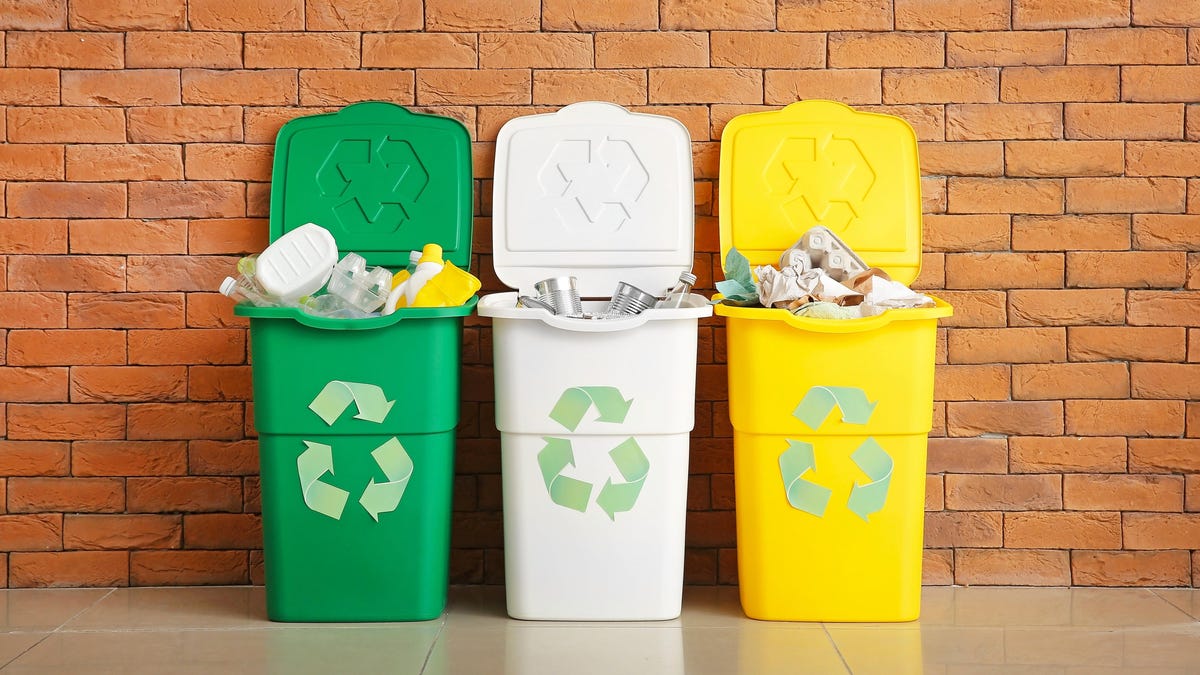Don’t Make These Mistakes When Recycling

We all know that theoretically we should recycle, but there are many myths and misconceptions that can make it difficult to understand exactly what should be recycled and how. In order not to recycle the wrong things (which can contaminate other perfectly good recyclables in your bin) and not to recycle the right things, let’s dispel some of these myths. We brought in Jeremy Walters, Republic Services Sustainability Ambassador, to guide us through this.
When in doubt, throw it away
The most important thing you can do about recycling is to be realistic and educated. Walters says that most people have the best of intentions, so they recycle whatever they think they can, which he calls “wish looping.” However, good intentions are not enough, as they can lead you to recycle the wrong things. You can not only contaminate other recyclables, but also damage equipment at the recycling facility or even harm employees.
To that end, your mantra should be: “When in doubt, throw it out.” Don’t feel like a loser if you still go to the plain old trash can regularly; Better to be safe than sorry later. Walters suggests focusing on recycling cardboard, paper, aluminum cans and plastic bottles or jugs to make the most of it.
How to properly prepare recyclables
Walters adds “empty, clean and dry” and “the magic words of recycling”. Even if you’re recycling the right things, it’s still not good if they have leftover food or liquids on them. Rinse and dry everything to make sure no residue ends up on other recyclables.
This brings us to a very specific example: while cardboard is almost always a winning option for recycling, it’s not that easy every time. Pizza boxes are especially complex. The cardboard itself would be ideal for recycling if it weren’t greasy. Only recycle cardboard, plastic, etc. if you can actually remove all residue from it.
without bags
Yes, you can use plastic or paper bags to collect recyclables in your home, but in most places you shouldn’t keep them in the bags when you throw them away.
“Materials need to be kept loose so they can be easily sorted and separated at the recycling center,” says Walters, who suggests collecting recyclables in your home’s trash can so you can simply toss them into a curbside cart when the time is right.
However, there are exceptions. For example, in New York City, you can use clear plastic bags, but you must separate the paper from everything else. You should always check your own local regulations for such nuances.
Don’t confuse reuse and recycling
Finally, returning to these good intentions, Walter says that people often confuse “recycling” with “reuse.” If you reuse or donate an old item, that’s great in terms of sustainability, but it doesn’t mean the item can be recycled.
Walters gave the example of a person who used to love bowling, gave it up and threw the ball and shoes in the trash, which actually happens a lot more often than you might think. It’s better to keep a donation container in the house along with your recyclables, rather than trying to recycle everything just because you’ve finished using it.